
3 benefits of having the latest construction technology on your side
Construction technology plays an important part in empowering businesses to maximise efficiency and ensure control and visibility on project progress, costs and margins. Read this blog to see what benefits the latest Microsoft innovation Power Apps could bring to your business.

In a number of construction businesses simple processes are still done on paper, Excel sheets or disparate digital tools. It is not uncommon for employees to fill out holiday requests on a piece of paper and hand them to their supervisor. Needless to say, transferring this info into a digital format takes a long time. Furthermore, it increases the admin burden on your staff and it takes time away from other more important business activities. To organise and complete these types of manual business processes more efficiently, Microsoft has introduced the Power Apps platform. It allows you to build apps that connect to your business data so that you can easily automate processes.
You are probably thinking it’s not for you? That’s not true. Every construction company is entitled to better efficiency and now how you achieve it is entirely up to you. No programming experience is required. In this blog we talk about what the latest construction technology means to the industry and how your business can benefit from it.
3 benefits of the latest construction technology:
-
Build an app without programming knowledge
With Power Apps you can quickly and easily design a simple company-specific app. For example, you can create an app to process employee timesheets. Automating this process, for example, saves time that can be better utilised for other activities. Most importantly, no long or complex lines of code or large investments to optimise your processes.
-
More efficient data processing in your construction company
By using an app instead of paper forms, all the data is already in your digital system ready to be interpreted. No need to allocate employees to manually key in paper forms. This makes processes a lot less prone to errors, less labour intensive and, therefore, cheaper. Staff can digitally submit a report or management can just as easily request it through the app. This request is then received by a colleague at the office who can handle the notification immediately. Admin burden is reduced, processes are optimised and automated. Data can be retrieved quickly at any time.
-
Seamless integration with other Microsoft programs
We saved the best for last. As Power Apps is part of the Microsoft Power Platform, it is seamlessly integrated with other Microsoft programs. For example, you can easily analyse the information you collect via a self-built app in a dashboard i.e. Microsoft Power BI.
When you use an integrated software solution based on the latest Microsoft Dynamics 365 Business Central platform, you can even link this data to entries in your ERP system. The Microsoft Power Platform shares all data across the software tools you work with. This means you always have visibility and control on your processes.
Microsoft Power Platform for construction
Do you want to learn more about the difference that Power Apps, Power Automate, Power BI and Power Virtual Agents can make to your organisation? Then take a look at this blog in which we talk about how you can be more efficient by working smarter (not harder) in construction using the Microsoft Power Platform. Or watch this 1-minute video that clearly explains how an ERP solution specifically for the construction industry works and how it integrates with the Microsoft Power Platform.
-
Share:

About the author
Paul Broderick | Paul has developed a keen eye for seeing specific customer requirements and recommending solutions to deliver business benefits and returns-on-investment. In the last three years Paul has focused this experience and knowledge specifically on the Construction industry, where digitisation is now the hot topic in IT, which has evolved and matured to become most relevant in today’s construction industry.
